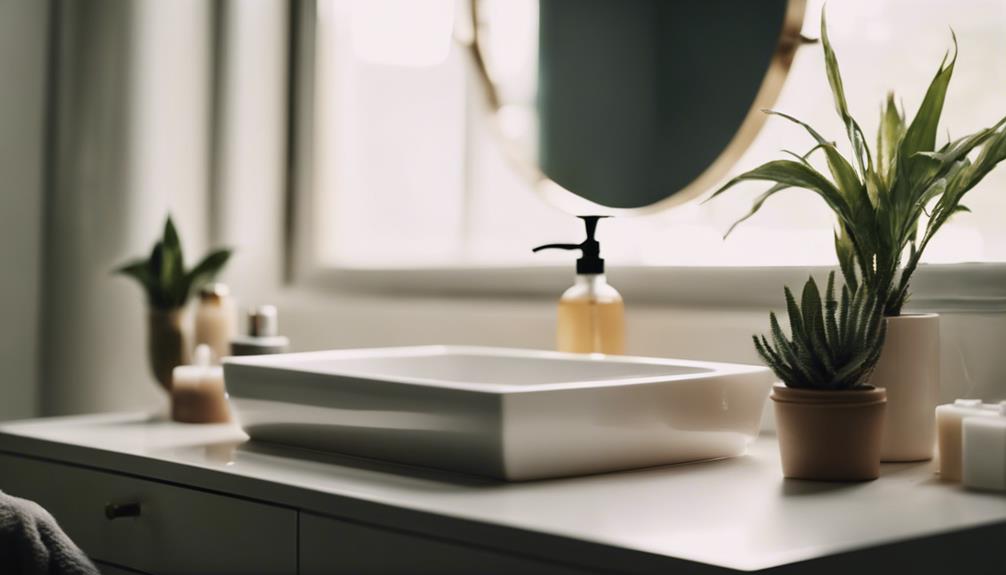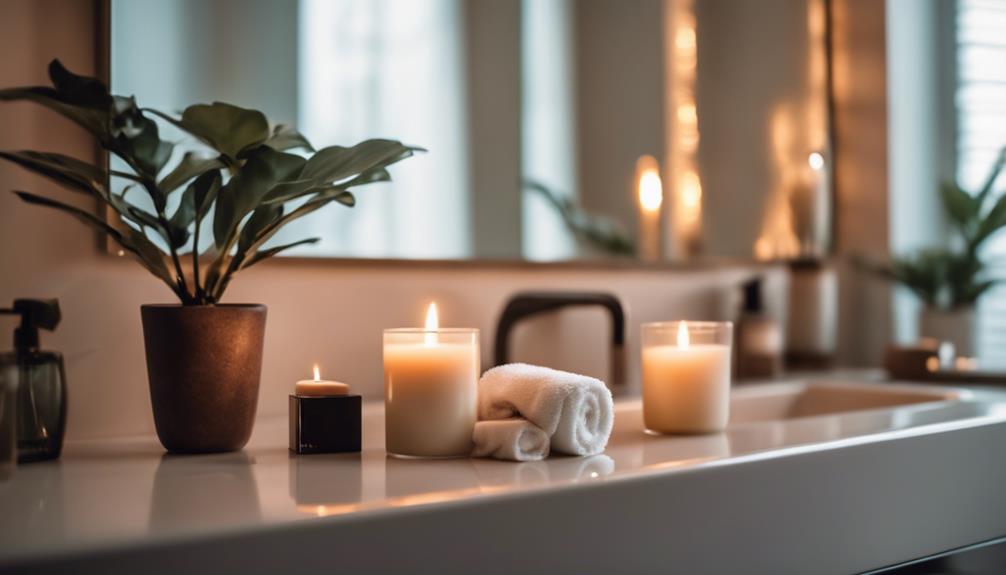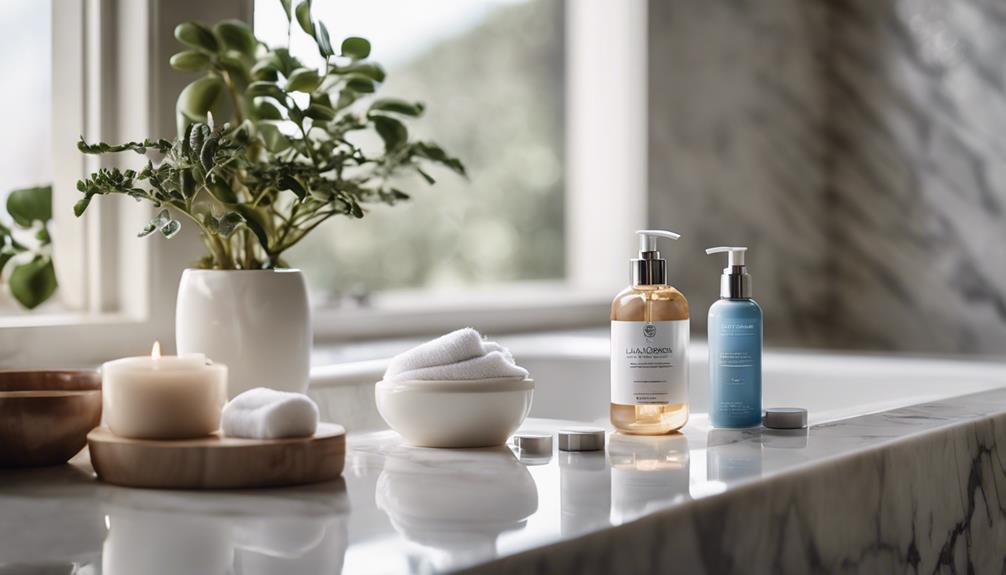To attain healthy and clear skin, kickstart with a personalized routine. Cleanse your face twice a day with a mild cleanser, and then apply a lightweight moisturizer that matches your skin type. Don’t forget to apply broad-spectrum sunscreen with at least SPF 30 every morning for protection against UV damage. Exfoliate 2-3 times per week to remove dead skin cells and maintain a smooth texture. If you shave, use a calming aftershave to soothe irritation. Consistency is crucial. Keep pushing forward, and you’ll discover more tips for perfecting your skincare routine.
Key Takeaways
- Identify your skin type (oily, sensitive, combination) to choose appropriate products for effective care.
- Cleanse daily with a gentle cleanser, followed by a lightweight moisturizer and broad-spectrum sunscreen.
- Exfoliate 2-3 times a week to remove dead skin cells and improve overall texture.
- Incorporate targeted treatments like serums to address specific concerns such as acne or hyperpigmentation.
Understanding Your Skin Type
To get the most out of your skincare routine, you need to pinpoint your skin type, as it directly influences the products you should choose. Understanding your skin type is vital, especially when you consider the differences between oily skin, sensitive skin, and other types.
If you have oily skin, you're likely dealing with excess sebum production, resulting in a shiny appearance and a higher risk of acne. Choosing lightweight, oil-free products can help manage this condition effectively.
On the other hand, if you suspect you have sensitive skin, it's important to tread carefully. This skin type can react adversely to various ingredients, leading to redness, itching, or even burning sensations. Opting for gentle formulations without harsh chemicals is key to maintaining your skin's health.
Lastly, don't forget about combination skin, which features oily areas—often the T-zone—and drier patches on the cheeks. Identifying your unique skin characteristics helps you select the right products that cater to your specific needs.
Regularly evaluating your skin's condition and adapting your routine accordingly guarantees you're always giving it the care it deserves.
Essential Skincare Products
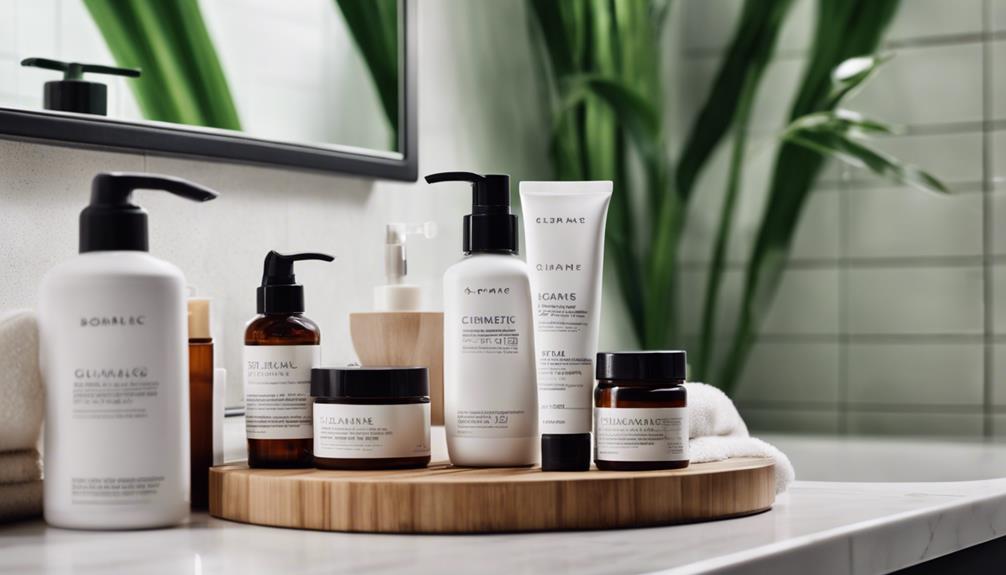
When it comes to essential skincare products, you'll want to focus on key categories that suit your daily routine.
Start with a gentle cleanser, a moisturizer tailored to your skin type, and a broad-spectrum sunscreen.
These basics lay the foundation for healthier skin and can be enhanced with additional targeted treatments as needed.
Key Product Categories
What essential skincare products should you include in your routine to maintain healthy skin?
Start with a gentle cleanser to effectively remove dirt and oil without stripping your skin. This sets a fresh foundation for the rest of your routine.
Next, you'll need a good moisturizer. If you have oily skin, opt for a lightweight formula that hydrates without clogging pores. For those with dry skin, choose a richer cream to guarantee your skin stays hydrated and healthy.
Don't forget about sunscreen! A broad-spectrum sunscreen with at least SPF 30 is vital for daily UV protection. Applying it every morning helps prevent sun damage and premature aging.
Consider incorporating exfoliation into your routine 2-3 times a week. This can be done with physical scrubs or chemical exfoliants, which help remove dead skin cells and promote a smoother complexion.
Lastly, targeted treatments like serums can address specific concerns, such as aging or acne.
Daily Routine Essentials
A daily skincare routine should focus on a few key products that work together to keep your skin healthy and vibrant. Start with a gentle cleanser, using it twice daily to remove dirt and excess oil. This step is essential for preventing breakouts and maintaining a fresh complexion.
After cleansing, apply a lightweight, non-comedogenic moisturizer to hydrate your skin without clogging pores. This keeps your skin feeling comfortable and looking smooth.
Don't forget the importance of broad-spectrum sunscreen. Choose a sunscreen with at least SPF 30 and apply it every morning, even on cloudy days. This protects your skin from harmful UV damage, which can lead to premature aging and other skin issues.
For those extra concerns, consider adding targeted treatments like serums containing niacinamide or retinol to your routine. These can help with specific issues like acne, pigmentation, or signs of aging.
Daily Routine Steps
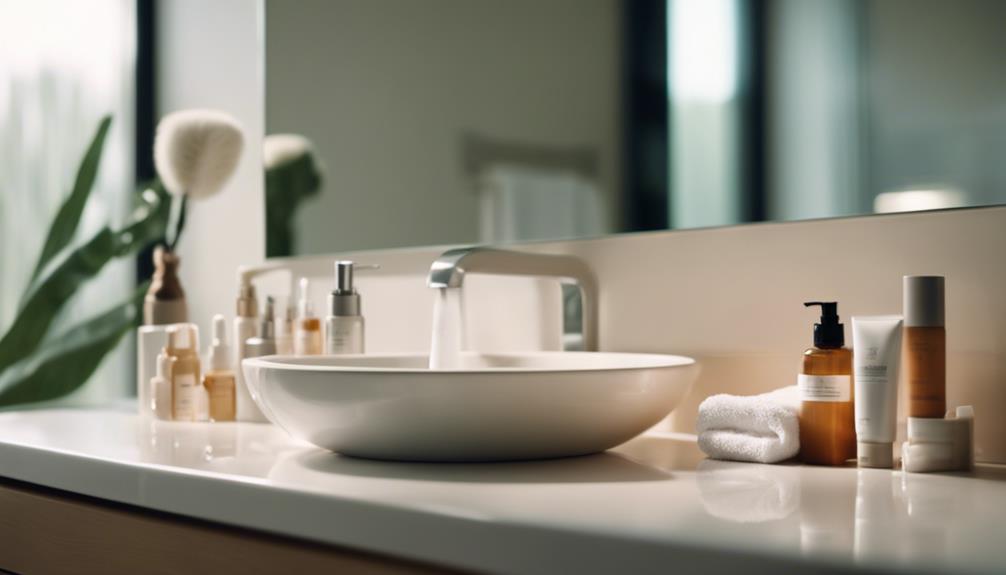
Start your daily skincare routine by cleansing your face twice a day with a gentle cleanser to remove dirt and oil buildup. This step is essential for maintaining a healthier complexion.
After cleansing, don't forget to follow up with a lightweight moisturizer in the morning that includes broad-spectrum SPF of at least 30 for UV protection.
Here's a quick checklist to streamline your routine:
- Cleansing: Wash your face morning and night with a gentle cleanser.
- Moisturizer: Apply a lightweight moisturizer with SPF in the morning.
- Exfoliation: Incorporate exfoliation 2-3 times a week to get rid of dead skin cells.
- Night Cream: Use a nourishing night cream in the evening for hydration and skin recovery.
Regular exfoliation will help prevent ingrown hairs and enhance your skin's texture.
Remember, consistency is key; as you stick to these steps, you'll achieve clear and healthy skin over time.
Seasonal Adjustments
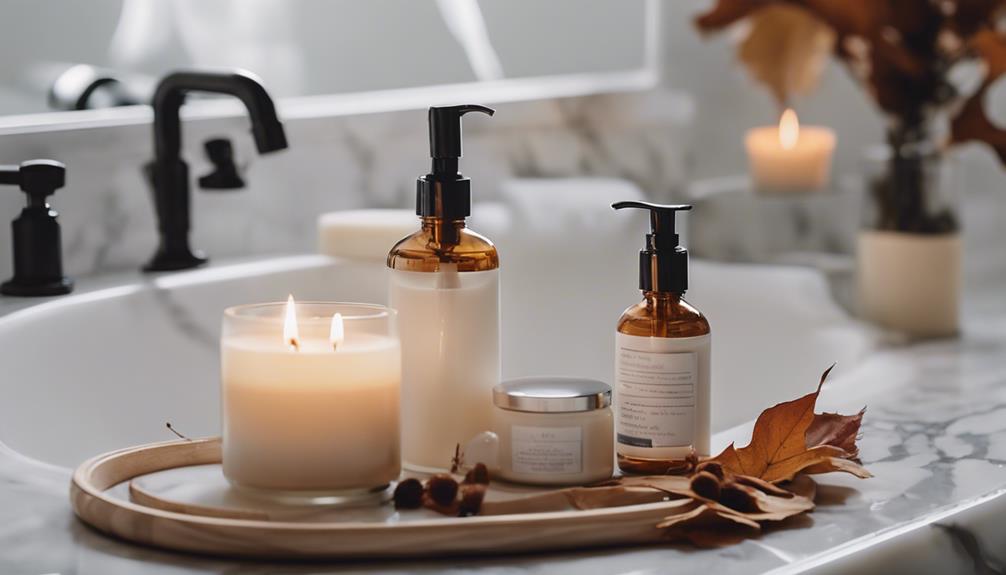
Adjusting your skincare routine with the changing seasons can greatly enhance your skin's health and appearance.
In winter, switch to heavier moisturizers to combat the increased skin dryness caused by lower humidity levels and colder temperatures. This will help maintain hydration and keep your skin barrier intact.
During summer, opt for lightweight, oil-free moisturizers to prevent excess shine and breakouts from the heat and humidity.
Your choice of cleansers should also reflect the season. A cream or hydrating cleanser can be more beneficial in winter for maintaining moisture, while a foaming or gel cleanser helps control oil during summer months.
As the seasons shift, like in spring and fall, monitor your skin's hydration levels. Incorporate more hydrating products, such as hyaluronic acid, to guarantee your skin stays plump and healthy.
Additionally, consider adding richer, nourishing serums or oils during the colder months to boost hydration and support your skin's barrier function.
Shaving Tips and Aftercare
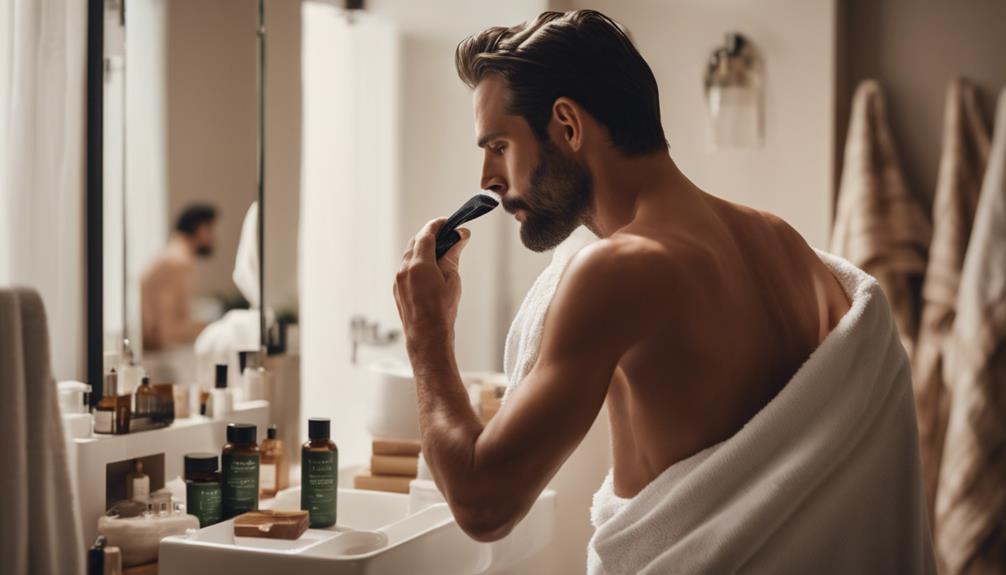
When it comes to shaving, preparing your skin is just as important as what you do afterward.
You'll want to focus on effective pre-shave techniques and guarantee you give your skin the care it deserves post-shave.
Let's explore how to get the best results from your shaving routine.
Pre-Shave Preparation Techniques
Preparing your skin before shaving is essential for achieving a smooth and irritation-free experience. Start with a gentle cleanser to remove dirt and oil. This pre-shave step helps reduce the risk of irritation and ingrown hairs.
Here are some effective techniques to enhance your shaving routine:
- Cleanse your face: Use a gentle cleanser to prepare your skin.
- Warm towel application: Apply a warm, damp towel for a few minutes to soften hair and open pores.
- Quality shaving cream: Use a good shaving cream or gel to create a protective barrier.
- Shave with the grain: Always shave in the direction of hair growth to minimize irritation.
After you finish shaving, remember that using an aftershave balm is vital. Opt for a soothing, alcohol-free option to hydrate and calm your skin.
Following these pre-shave techniques will set you up for a smoother shave and healthier skin overall.
Post-Shave Skin Care
Post-shave care is essential for maintaining healthy skin and preventing irritation after your grooming routine.
Start by applying a soothing aftershave immediately after you finish shaving. Look for products that contain hydrating ingredients like aloe vera or witch hazel, as these can help calm your skin and reduce any redness or discomfort.
To guarantee the best post-shave skin care, avoid using alcohol-based aftershaves, as they can dry out your skin and exacerbate irritation. Instead, opt for a gentle, hydrating formula that replenishes moisture and soothes any razor burn.
If you find your skin still feels sensitive, consider using a fragrance-free moisturizer afterward to lock in hydration.
Professional Guidance and Treatments
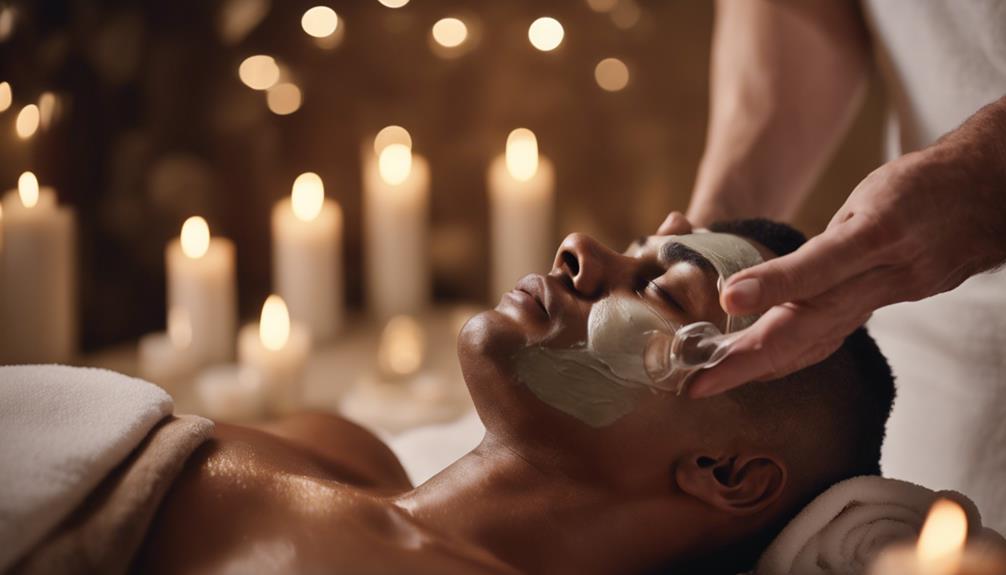
Seeking professional guidance from a dermatologist can transform your skincare routine by providing tailored advice and effective treatments for your unique skin concerns. A dermatologist can help you identify your skin type and recommend the best products and professional treatments for achieving healthy skin.
Here are some key benefits of consulting a dermatologist:
- Personalized Skin Assessments: Understand your skin's needs through expert evaluation.
- Early Detection: Catch potential skin issues, like skin cancer, before they become serious.
- Advanced Treatments: Access professional treatments, such as chemical peels and laser therapy, to tackle stubborn concerns.
- Stronger Ingredients: Benefit from prescription-strength products, like retinoids, that outperform over-the-counter options.
Can the Skincare Routine for Men also be effective for 40-year-old women?
Yes, an agedefying skincare routine for men can be just as effective for 40-year-old women. Both can benefit from using products with retinol, hyaluronic acid, and antioxidants to combat aging signs. Consistent sunscreen application and regular exfoliation are also essential agedefying skincare routine tips for both men and women.
Conclusion
So, you've got your skincare routine down, but let's be honest: if you think washing your face once a week is enough, you might as well be applying mud!
Achieving clear, healthy skin takes a bit of effort—who knew? Embrace those daily steps, invest in the right products, and don't skip the aftercare.
With a little consistency, you'll be the envy of your friends instead of the guy with the mysterious breakouts. Trust us, it's worth it!
